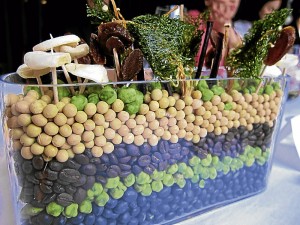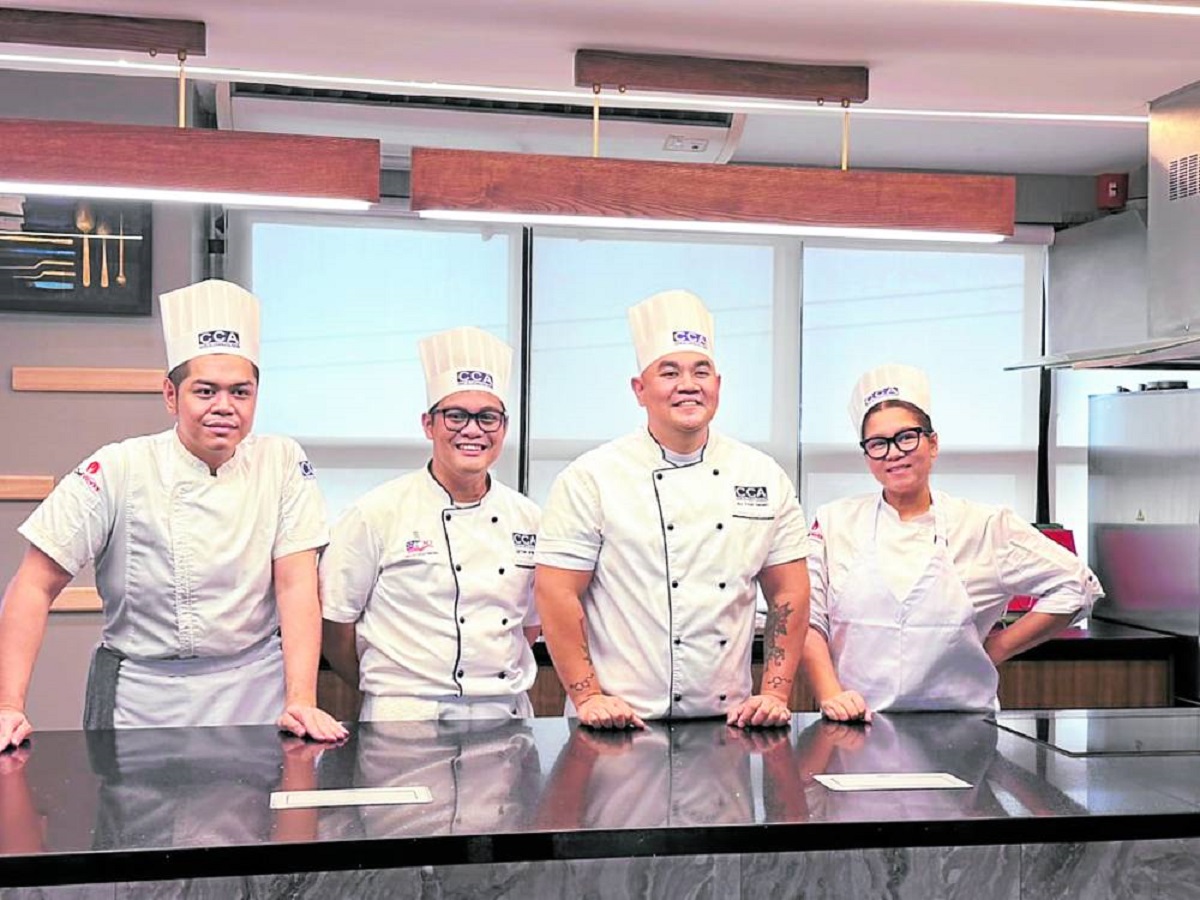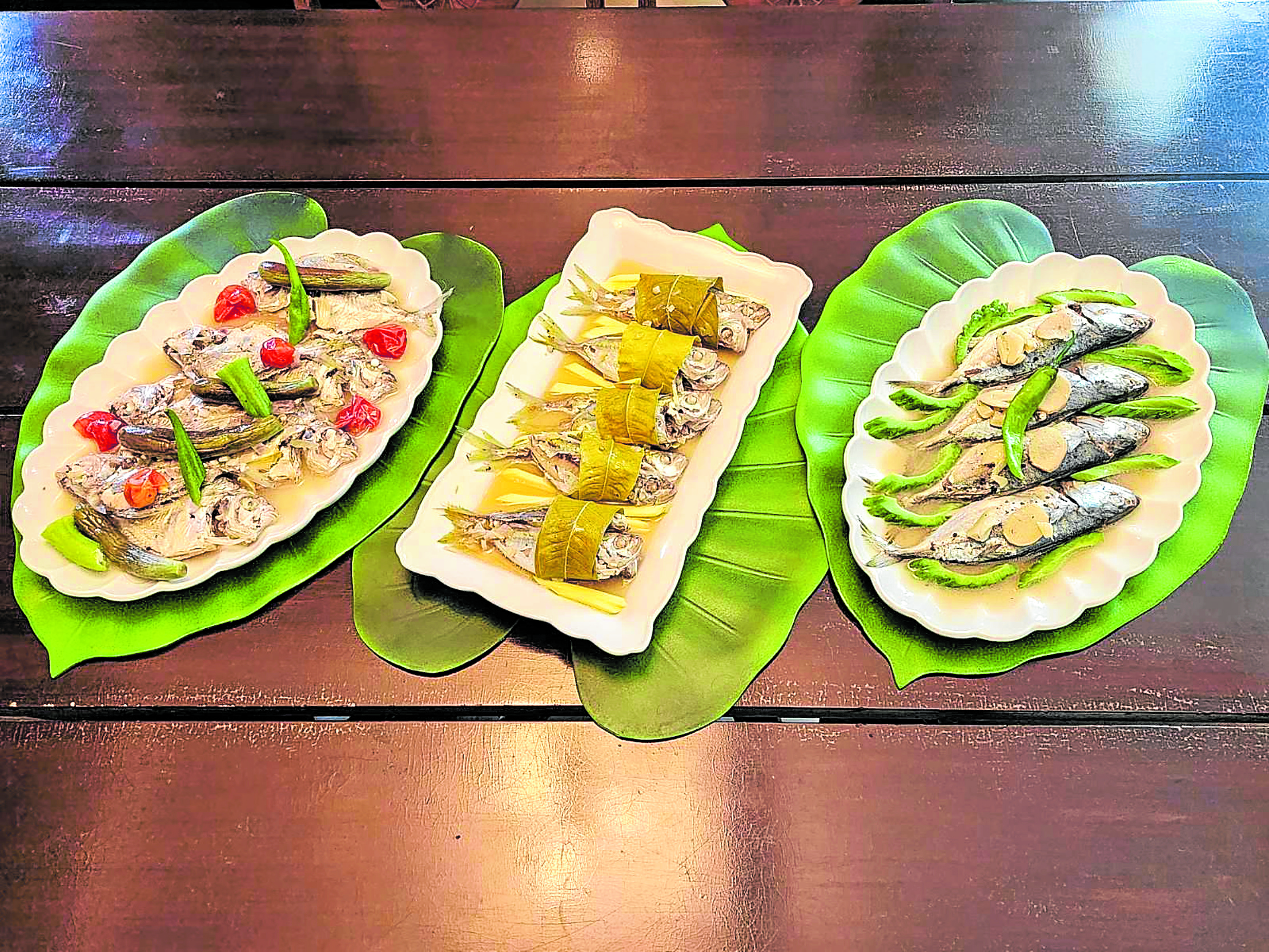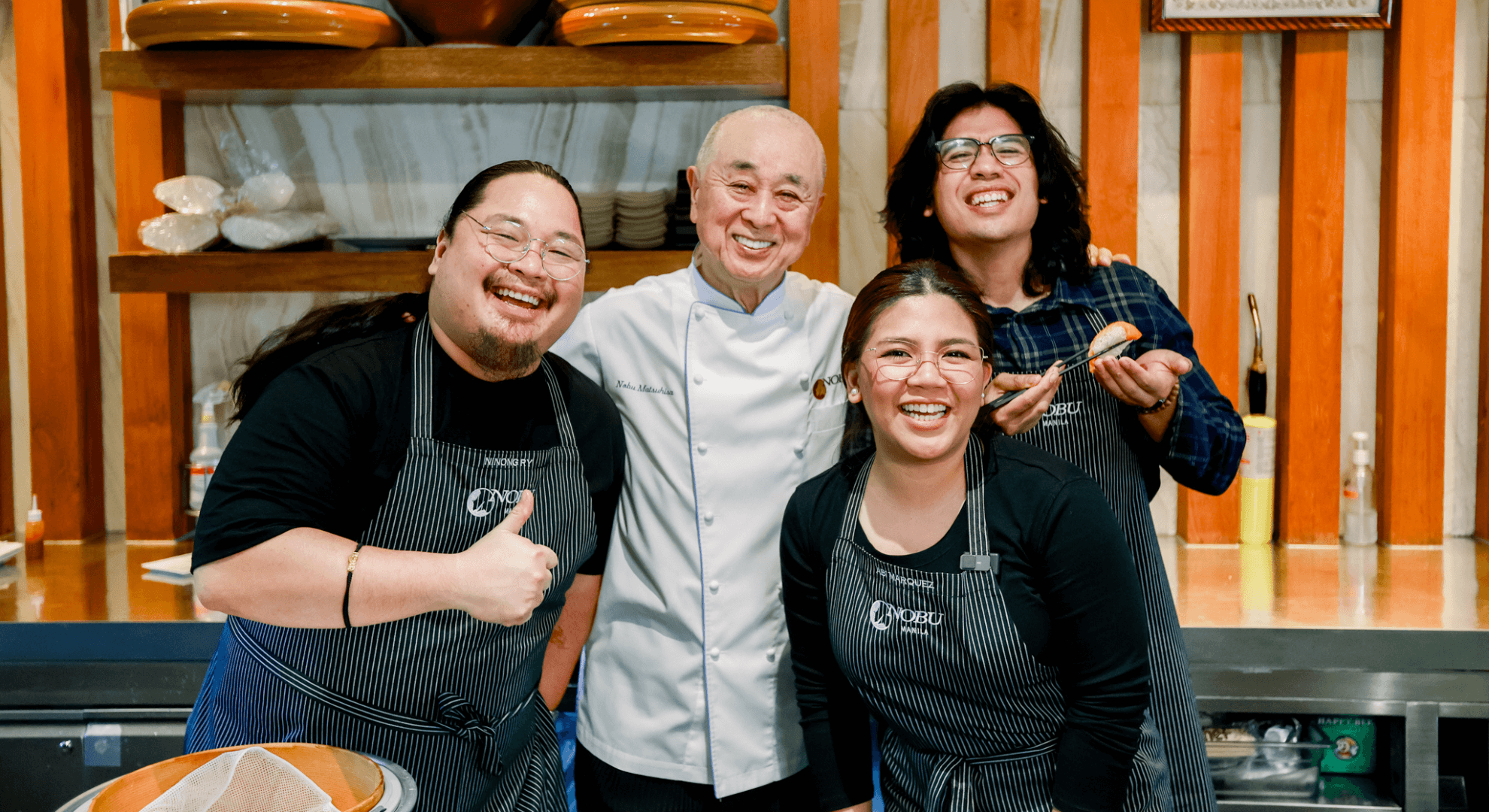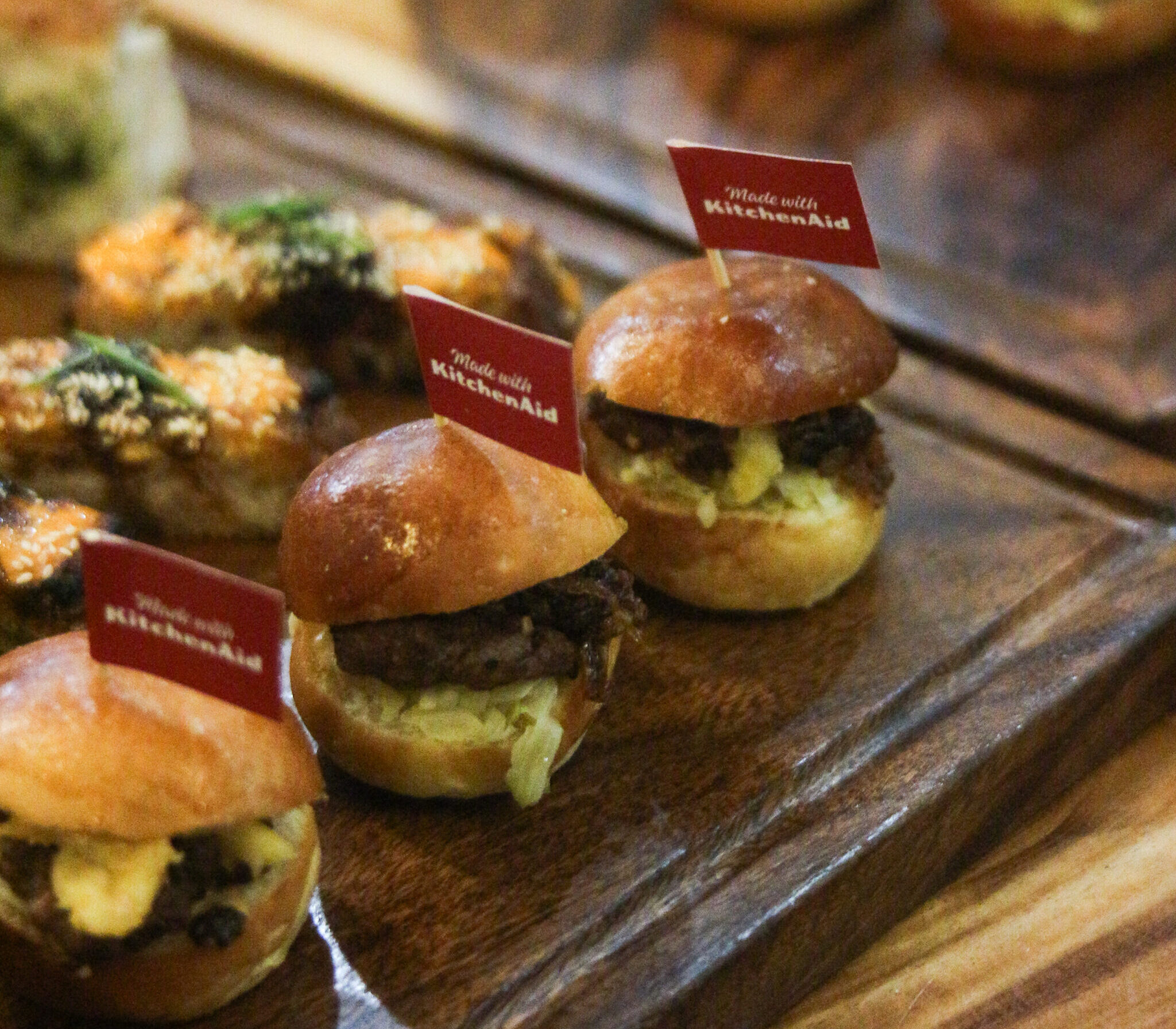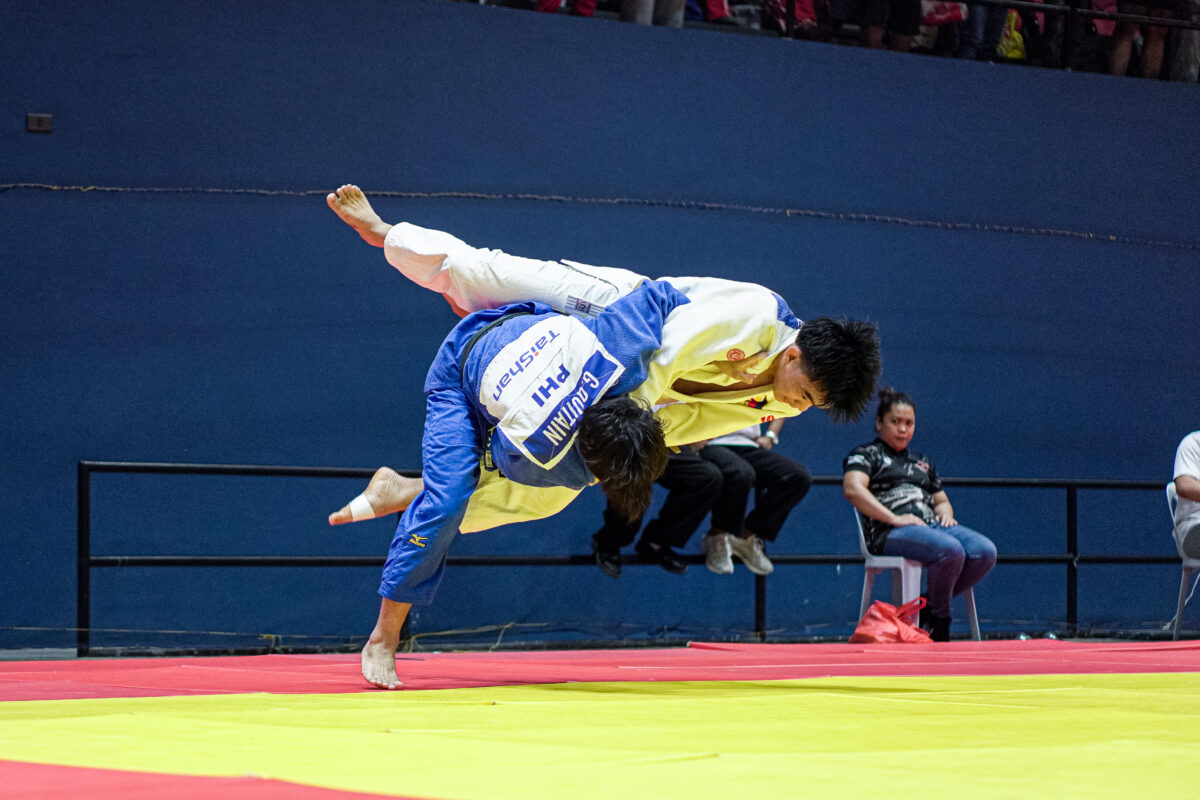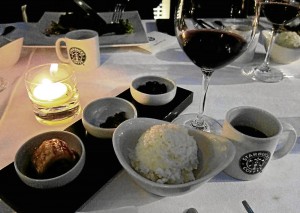
Pairing wine with food is the norm. When done properly, it makes a meal interesting and refined. Wine brings out the layers of flavors and gives a nice buzz to the dinner.
But coffee?
Coffee is usually taken after a meal, not during.
Now, a Starbucks “coffee experience manager” from the US tells us coffee can also be incorporated in a full-course spread with wine.
Coming all the way from Seattle, June Ashley recently took us to a modern Korean restaurant in Seoul, South Korea, to experience such unusual pairing. This was part of the Starbucks Coffee College, a two-day lecture on how Starbucks became a brand and a tradition.
Ashley, who has been with Starbucks since 1998, is a “Global Coffee Master”; that means she knows, by just smelling, which coffee is good, and which food should go with it.
Coffee, she said, is usually taken with something sweet, but it can also be matched with an entrée—as long as you know its undertones and complementary flavors.
“Coffee, like wine, brings out the flavors in savory items,” Ashley said. “It has flavor notes like berries, caramel, cocoa, floral, nuts and spice that excite the palate.”
She added: “Korean food has salty, spicy, sweet flavors that would go well with coffee.”
The coffee-pairing dinner at CongDu restaurant was set in a lush garden. On a cold night, the steaming coffee, with the intensity of the wine, helped us enjoy the “neo-Korean cuisine.”
General manager Joane Min described this cuisine as “modern dishes done with traditional Korean spices and preparations.”
Coffee and wine pairings
Corinne Eom, a popular sommelier in Seoul, chose the wine, while Ashley assigned the coffee. Soon, Chul Kim, Eom’s representative, and Ashley, explained their choices.
On our table were small rectangular glass containers resembling plant boxes. Layers of black beans, green peas, coffee beans, soybean made up the “soil”; on it “bloomed” pickled ginseng skewered on toothpick ends. Nori wrappers were set as “leaves.”
We thought these were neat centerpieces—in fact, they were appetizers.
Most of the grains were edible; you could just take a handful and eat it like popcorn. You could also do this at home to serve nuts and chips.
The salad was Good Fortune Wraps filled with Vegetables, and Mountain Herb Salad—pastry pockets with veggies and greens with dressing. This was paired with Kenya Iced Coffee served in small mug, and Domaine Marcel Deiss Pinot Gris-Bergheim white wine.
Ashley directed us to, first, take a sip of coffee, let it roll in the tongue, determine the tones of the coffee, then take a bite of the food, and a sip of the wine. Slowly.
Too tedious? It was quite fun—coffee pairing with a seven-course meal for the first time.
The flavors could be confusing at first, and the tummy might not be used to welcoming coffee and wine at the same time—one stimulating, and the other relaxing—but once one got the hang of it, one would enjoy it.
The Kenya iced coffee has a currant, grapefruit full-bodied flavor, but with light acidity, making it suitable for Korean vegetable dishes. Same with the Domaine Marcel Deiss Pinot Gris-Bergheim from Alsace, France, which was made from pinot gris grapes and had peach, pear, herbal notes.
A creamy, slightly sweet soup was next served—the Lotus Seed Milk Soup with Latte Foam. This one wasn’t paired with any wine or coffee.
Then we had the tangy Green Sea Sauce Abalone Risotto paired with hot Guatemala Antigua Coffee and Mud House Swan Pinot Noir. The coffee was spicy, nutty, and had hints of cocoa and caramel. The medium-bodied red wine had hints of cherry, raspberry and strawberry flavors.
We had Jeju Black Pork in Brown Bean Paste, and Sulawesi Coffee Sauce with Julienne Aged Kimchi. This spiced pork was slow-cooked for a whooping 48 hours, so you could just imagine how tender it was. It was the only entrée which had coffee in it, and it was just fitting that it was paired with hot shot of Sulawesi coffee.
Sulawesi was a full-bodied herbal, earthy coffee variety that complemented flavors of cheese, butter, caramel, apples and pears. The wine was spicy and earthy Napa Station Cabernet Sauvignon from Napa Valley, California. It had notes of blackcurrant and plum, plus hints of mushroom, toast and coffee developed through 18 months of aging in oak barrels.
The same wine was paired with the Galbi steak drizzled with special sauce made of 15-year-old vintage soy sauce. A shot of Sumatra coffee and sips of spicy wine went well with this delicate steak.
CongDu restaurant had a special feature, a remote-control accordion roofing that opened up to give you a view of the stars—pretty much like a convertible. It could have been awesome to see the sky while having coffee and wine, but it got drizzly, so we weren’t able to dine al fresco.
It was a little disappointing, but nothing that a rich dessert couldn’t fix. The Date Ice Cream and Chesnut Mousse with Robus Coreanus (a type of berry) Syrup was served. Its tender sweetness relieved the palate of the saltiness from the meats.
You think we’d skip the dessert wine and coffee after the filling meal?
For coffee lovers, every meal is capped with a good cup. Also, coffee aids digestion, added Ashley.
The coffee finale of that night was Shade Grown Mexico coffee—medium-bodied, tangy and a little citrusy. The wine was a sparkling red from Australia, very fruity, a little spritzy and refreshing.
After a night of good food, coffee and wine, we realized that having coffee with your meal could be very memorable even informative, and it’s something we can do with our local cuisine.
The local Starbucks team, through the help of Rustan’s Coffee COO Noey T. Lopez, and marketing team Keith Cole and assistant marketing manager Love Fernandez, has given us a list of possible Filipino pairings.
Although Starbucks encourages you to drink the coffee with its food items such as sandwiches and bagels, Lopez said, it is also cool to experiment with their blends which you can have either to go or brew yourself right in your home.
Pinoy pairings
Adobo and caldereta—Espresso Roast (tones of caramel, spices, chocolates, nuts)
Pansit palabok—Gold Coast Blend (maple, chocolate, caramel, cheesecake)
Champorado—Italian Roast (chocolate, caramelized sugar, spices)
Longganisa—Guatemala Casi Cielo (chocolate, nuts, caramel, berries, lemons, herb-infused food, cheeses)
Vegetable lumpia—Sulawesi (cheese, butter, caramel, apples, pears)
BBQ—French Roast (toasted nuts, caramelized sugar, roasted vegetables)
Yema—Sumatra (cinnamon, oatmeal, maple, butter, toffee, cheeses)
Polvoron, pastillas, bibingka—Colombia Narino Supremo or Guatemala Antigua (nuts and caramel)
Puto—Breakfast Blend (nuts, apples, blueberries, lemons)
Kutsinta, biko—Kape Vinta Blend (chocolate, nuts, cinnamon)


